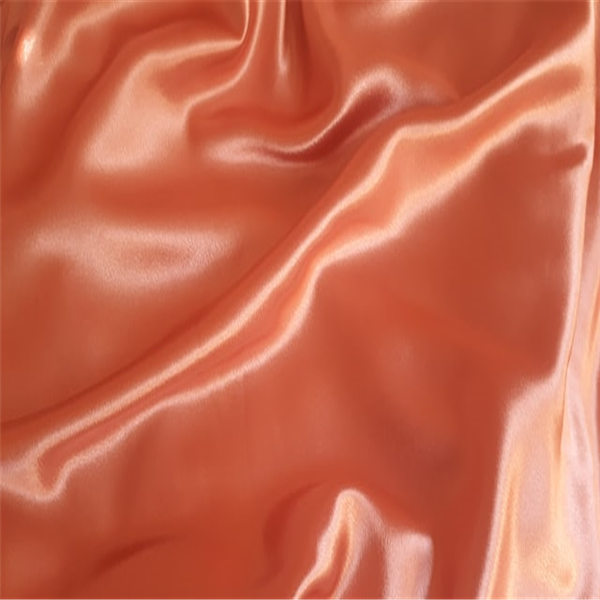Satin fabric is the general name of satin weave fabric, which is denser and thicker than ordinary fabrics, but the cost is relatively higher.
The satin fabric has the difference between the outside and the inside. The complete weave ring has the least interlacing points and the longest float.
The surface of the fabric is roughly composed of warp or weft floats, and the satin fabric is soft in texture.
The satin fabric has front and back parts, and the cloth surface is smooth and shiny.
The most common satin fabric is striped satin, or satin for short.
It is divided into two types of fabrics: forty two-meter-four-wide satin and sixty two-meter-eight-wide satin.
The technique of weaving first and then dyeing, this kind of material is generally monochromatic, with elongated horizontal strips.
The texture of pure cotton is miniature, no balls, not easy to fade.

Satin fabric features:
The surface of the warp satin is mostly covered by the floating length of the warp yarn.
In order to highlight the effect of the warp yarn, the warp tightness must be greater than the weft tightness.
Generally, the ratio of the warp and weft tightness is about 5:3. For example, Zhigong It, plain satin, etc.
The surface of the weft satin fabric is mostly covered by the weft floating length.
In order to highlight the weft effect, the warp tightness must be less than the weft tightness. Generally, the ratio of warp and weft tightness is about 2:3.
For example, horizontal satin Wait.
In order to make satin fabrics soft, yarns with less twist are often used.
The twisting direction of the yarn has a certain influence on the appearance effect of satin fabrics.
The warp yarns of the warp satin fabric or the weft yarns of the weft satin fabric are twisted in the same direction on the fabric surface as the grain direction of the weave, and the surface gloss of the fabric is good, such as horizontal satin.
If the twisting direction of these yarns on the cloth surface is opposite to the direction of the texture of the weave, the surface of the satin will appear textured, such as Zhigong.
Based on the satin weave, many satin weave variations can be evolved.
For example, a single or multiple weave points are added around the warp or weft weave points to form a reinforced satin weave.
Different fly numbers are used in one weave cycle to form a variable satin weave, such as six variable satin weave, the warp The fly number is 2, 3, 4, 4, 3, 2; the warp or weft organization points are extended to form a heavy satin weave, which is often used in handkerchief weaving.
The satin weave can be combined with other weave to form satin poplin, satin handkerchief and other fabrics.



